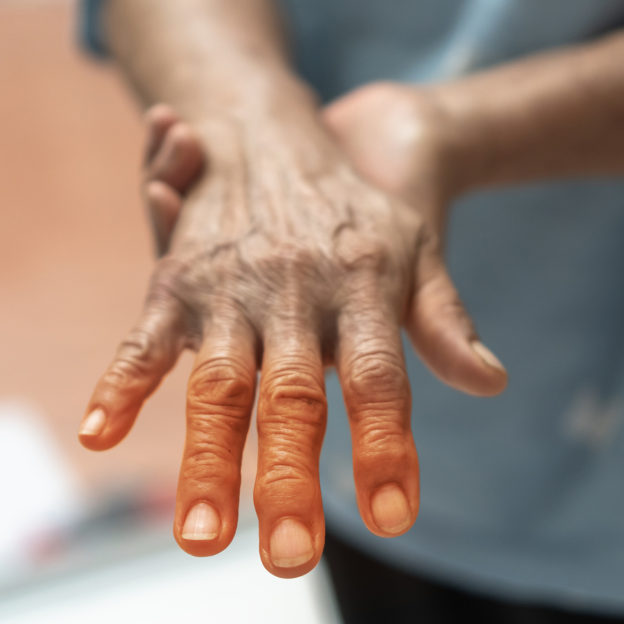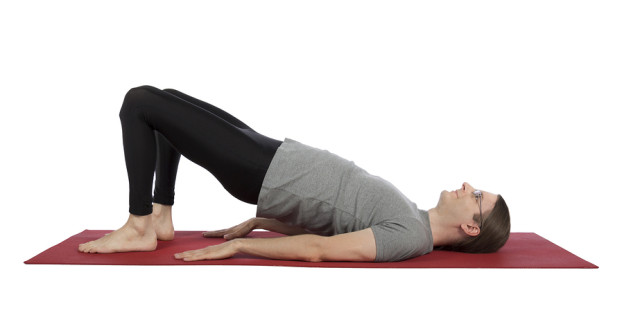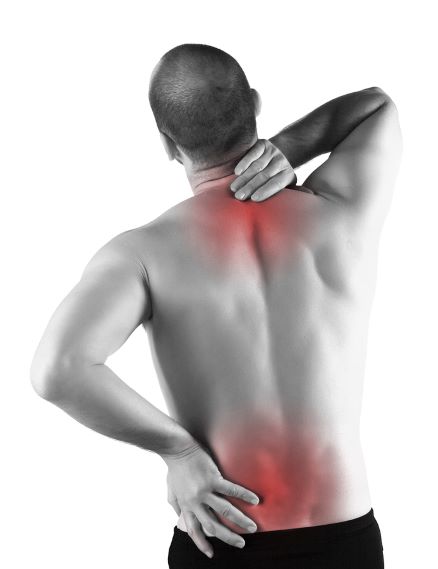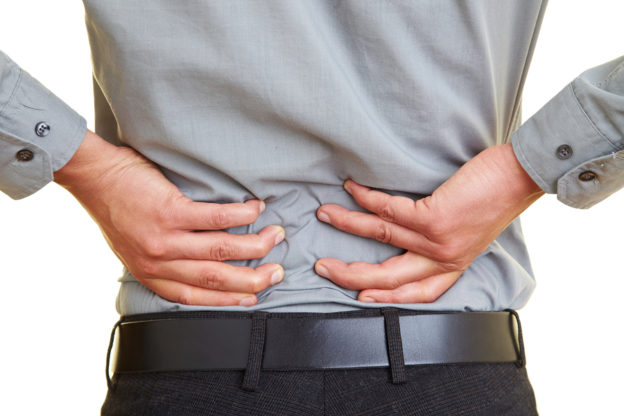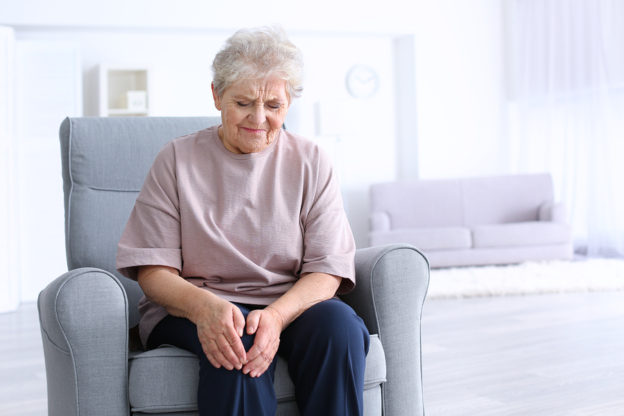By David Blyweiss, M.D., Advanced Natural Wellness
April 10, 2020
Recently, a patient named J.D. came to me searching for pain relief. He’d been from doctor to doctor searching for a solution, with no clear answers in sight.
He’s not the first patient I’ve seen like this. Many folks who land in my office have gone for years and years without ever receiving an accurate pain diagnosis.
In J.D.’s case, all sorts of health conditions had already been ruled out. He didn’t have multiple sclerosis, bone cancer, diabetic neuropathy, peripheral artery disease or even ALS (amyotrophic lateral sclerosis).
But once the big scary diseases had been ruled out, J.D. felt his physicians simply dismissed him. They acted like he was wasting their time with his continued pain complaints.
They just wanted him out of their office. So, when J.D. came to see me, we took a different approach than many of his other doctors.
We sat down together and talked about what his pain felt like. Where did it occur? How often did it reach a scale of 10?
He described it as a stabbing and burning pain – often accompanied by agonizing spasms and twitches in his feet, legs and fingers.
Next we addressed his lifestyle – the foods he does and doesn’t eat, physical activity, sleep habits and so on. I also inspected his physical appearance – his hair, skin, mouth and fingernails.
Then, instead of sending the poor fellow off for more neurological exams and imaging studies, I drew blood samples. We sent them out for testing. In particular, I was looking for nutritional deficiencies linked to his symptoms and appearance.
It’s this type of detailed examination that sets a functional medicine doctor like myself apart from conventional doctor. We look for the upstream cause of your downstream problem.
In many cases, this comes down to the foods you eat. The most important tool in our toolkit to change someone’s health – mental as well as physical – is what’s on the end of their fork and not at the bottom of a prescription bottle.
Can Addressing Nutritional Deficiencies Cure Your Pain?
So why don’t conventional docs pay more attention to nutrition and lifestyle?
In fact, most mainstream physicians receive very little training on nutrition. At last count, only 26 out of 105 U.S. medical schools required students to take a dedicated nutrition course. This amounts to only 19.5 hour of nutritional training throughout their entire medical school careers!
It’s one reason I trained in functional medicine – to learn how food and nutrition affect all systems of the body. And it sure comes in handy when it comes to diagnosing hard-to-explain pain cases like J.D.’s.
As it turns out, J.D. was suffering from a vitamin B12 deficiency – which is much more common than you might think.
In many cases, low B12 levels aren’t due to the foods we eat. Instead, people’s bodies aren’t properly absorbing the B12 in their system.
If your body can’t absorb vitamin B12 you may experience severe, shooting nerve pain from irritated or damaged nerves. This can happen anywhere on your body. But in J.D.’s case, it displayed as peripheral neuropathy.
Restoring enough vitamin B12 levels helps rebuild nerves, inhibits pain-signaling pathways and protects the myelin sheath that cushions your nerves. It also helps ease symptoms of low back pain.
We started him off on vitamin B12 injections, then transitioned to a sublingual B12 spray. (Using the sublingual version bypasses malabsorption issues.)
Recommendation: If you have unexplained and undiagnosed shooting pain accompanied with spasms, numbness and/or a burning sensation, have your vitamin B12 levels check. A serum or methylmalonic acid test can quickly reveal a vitamin B12 deficiency.
I also tested J.D. for vitamin D. And I wasn’t surprised to learn he was deficient in this nutrient, too.
Most people aren’t aware of this, but vitamin D deficiency causes weakness and cramps in the muscles. It also contributes to aches and pains. It can even make your bones hurt.
And here’s a real eye opener: patients who suffer from chronic pain or have fibromyalgia commonly have low vitamin D levels.
Unfortunately, somewhere between two and four out of every five Americans are deficient in vitamin D. (It just depends on where you place the cut-off, and that’s a controversy all of its own.)
It’s easy enough to boost your levels by supplementing with a vitamin D formula that contains the cholecalciferol form (the most active form) of D3.
Recommendation: Ask your doctor for a 25-hydroxy vitamin D test. Set your goal for maintaining levels of around 65 ng/ml. If you have been diagnosed with an autoimmune disease closer to 75 ng/ml is better.
Even though J.D. wasn’t deficient in magnesium, it’s not uncommon to experience unexplained muscle pain, cramps and neuropathic pain if you are low on this mineral.
And as with vitamin D, people with fibromyalgia often have low levels of this magnesium in their bodies.
When fibromyalgia patients supplement with as little as 600 mg of magnesium malate daily, their fibromyalgia scores show improvement. This includes levels of pain, function, stiffness and fatigue.
In general I recommend 5 mg of magnesium per pound of body weight. Take it in divided doses throughout the day. I like the magnesiums that end in “ate”… glycinate, orotate, malate, gluconate, threonate etc. The malate specifically for fibromyalgia. Just remember that citrate can cause loose bowels – even at a low dose.
I also encourage you to soak in a warm Epsom Salt bath. It’s a perfect remedy for your aches and pains. Not only do these salts help relieve soreness, they also flood your body with magnesium sulfate that gets absorbed into your body through your skin. Just add two cups to your bathwater.
Recommendation: A magnesium RBC blood test is the most precise magnesium blood test you can get. It measures the actual magnesium levels in your cells.
If pain is your enemy, don’t forget to cut inflammatory foods like refined carbs, sugars, artificial sweeteners, omega-6 fatty acids, gluten, processed meats and MSG from your diet. Replace them with healthy, plant-based foods and clean animal proteins that stave off inflammation.
And don’t forget to exercise with regularity!
SOURCES:
Adams KM, et al. Nutrition education in U.S. medical schools: latest update of a national survey. Acad Med. 2010 Sep;85(9):1537-42.
Andrès E, et al. Vitamin B12 (cobalamin) deficiency in elderly patients. CMAJ. 2004 Aug 3;171(3):251-9.
Buesing S, et al. Vitamin B12 as a Treatment for Pain. Pain Physician. 2019 Jan;22(1):E45-E52.
Yilmaz R, et al. Efficacy of vitamin D replacement therapy on patients with chronic nonspecific widespread musculoskeletal pain with vitamin D deficiency. Int J Rheum Dis. 2016 Dec;19(12):1255-1262
Shipton EA, et al. Vitamin D and Pain: Vitamin D and Its Role in the Aetiology and Maintenance of Chronic Pain States and Associated Comorbidities. Pain Res Treat 2015 19;2015:904967.
Na HS, Ryu JH, Do SH. The role of magnesium in pain. In: Vink R, Nechifor M, editors. Magnesium in the Central Nervous System [Internet]. Adelaide (AU): University of Adelaide Press; 2011.
DiNicolantonio JJ, et al. Subclinical magnesium deficiency: a principal driver of cardiovascular disease and a public health crisis. Open Heart. 2018; 5(1): e000668.
Bagis S, et al. Is magnesium citrate treatment effective on pain, clinical parameters and functional status in patients with fibromyalgia? Rheumatol Int. 2013 Jan;33(1):167-72.

